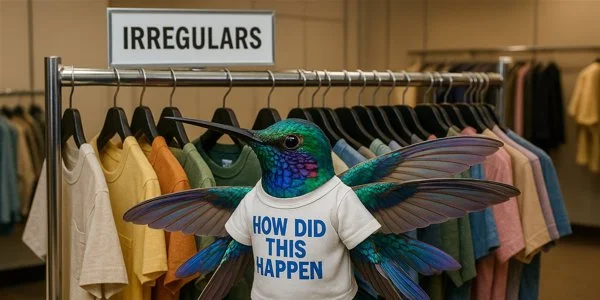AI Slop: What It Is—and How to Steer Clear of It
You’ve probably seen it. The warped hands. The uncanny smiles. The melted type on a “perfect” AI-generated ad. It’s called AI Slop—and it’s quietly creeping into social feeds, stock libraries, and brand visuals everywhere.
AI slop happens when speed overtakes intent. Instead of thoughtful creation, you get a slurry of half-formed images produced by models that have trained on their own mess. The result? Visual noise that erodes trust, muddles your message, and makes your brand look like everyone else (or nothing else at all).
But here’s the good news: you can use AI to move fast without falling into the slop trap. It just takes a little structure.
🧠 What “AI Slop” Actually Is
AI slop isn’t about the tool—it’s about the outcome. It’s what happens when image generation leans on:
Overtrained models that remix other AI images until realism breaks
Lazy prompts that skip subject, light, or intent
Spammy datasets that feed back their own distortions
Rushed curation, where quantity wins over clarity
The result looks “off.” Surfaces blur. Shadows don’t make sense. Faces repeat. You can feel it even if you can’t name it.
⚠️ Why It Matters for Brands
Audiences might scroll past an ad in seconds—but they instantly notice when something feels wrong.
AI slop can:
Undercut credibility (“is this even real?”)
Create accessibility issues (distorted text, visual confusion)
Cause copyright risk (unfiltered training data)
Make your brand feel generic instead of distinct
In short: the faster you create, the more you need quality control.
🧩 The Anti-Slop Workflow
A simple, repeatable checklist for clean, brand-safe AI images:
1️⃣ Start with intent. One sentence: what is this image for?
2️⃣ Structure your prompt. Include subject, style, light, lens, color, and mood.
3️⃣ Generate in batches. Don’t settle for the first pass—compare and curate.
4️⃣ Run a visual check. Look for hands, eyes, symmetry, text artifacts, shadows.
5️⃣ Check rights and ethics. No real people, no logos, no copyrighted textures.
6️⃣ Export with purpose. Right format, size, and compression for each platform.
7️⃣ Final brand fit. Does it align with your palette, type, and tone?
🌵 A Smarter Way Forward
AI doesn’t have to replace creativity—it can accelerate craftsmanship. The brands that rise above the slop will be the ones that treat AI as a collaborator, not a shortcut.
Keep your prompts intentional. Keep your eyes sharp. And your images—like your brand—will stay clean, confident, and unmistakably yours.
We use a variety of AI tools for Whirr imagery from different partners:
OpenAI: Sora, Dall-E
Google: Gemini + ImageFX Integration, Veo
Midjourney
Claude
Perplexity




